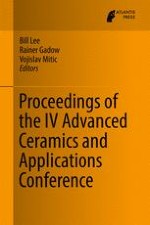2017 | OriginalPaper | Buchkapitel
Environmental Aspects of Red Mud and Its Utilization as a Component of Building Materials
verfasst von : Gordana Topličić-Ćurčić, Vojislav Mitic, Dušan Grdić, Nenad Ristić, Zoran Grdić
Erschienen in: Proceedings of the IV Advanced Ceramics and Applications Conference
Verlag: Atlantis Press
Aktivieren Sie unsere intelligente Suche, um passende Fachinhalte oder Patente zu finden.
Wählen Sie Textabschnitte aus um mit Künstlicher Intelligenz passenden Patente zu finden. powered by
Markieren Sie Textabschnitte, um KI-gestützt weitere passende Inhalte zu finden. powered by
